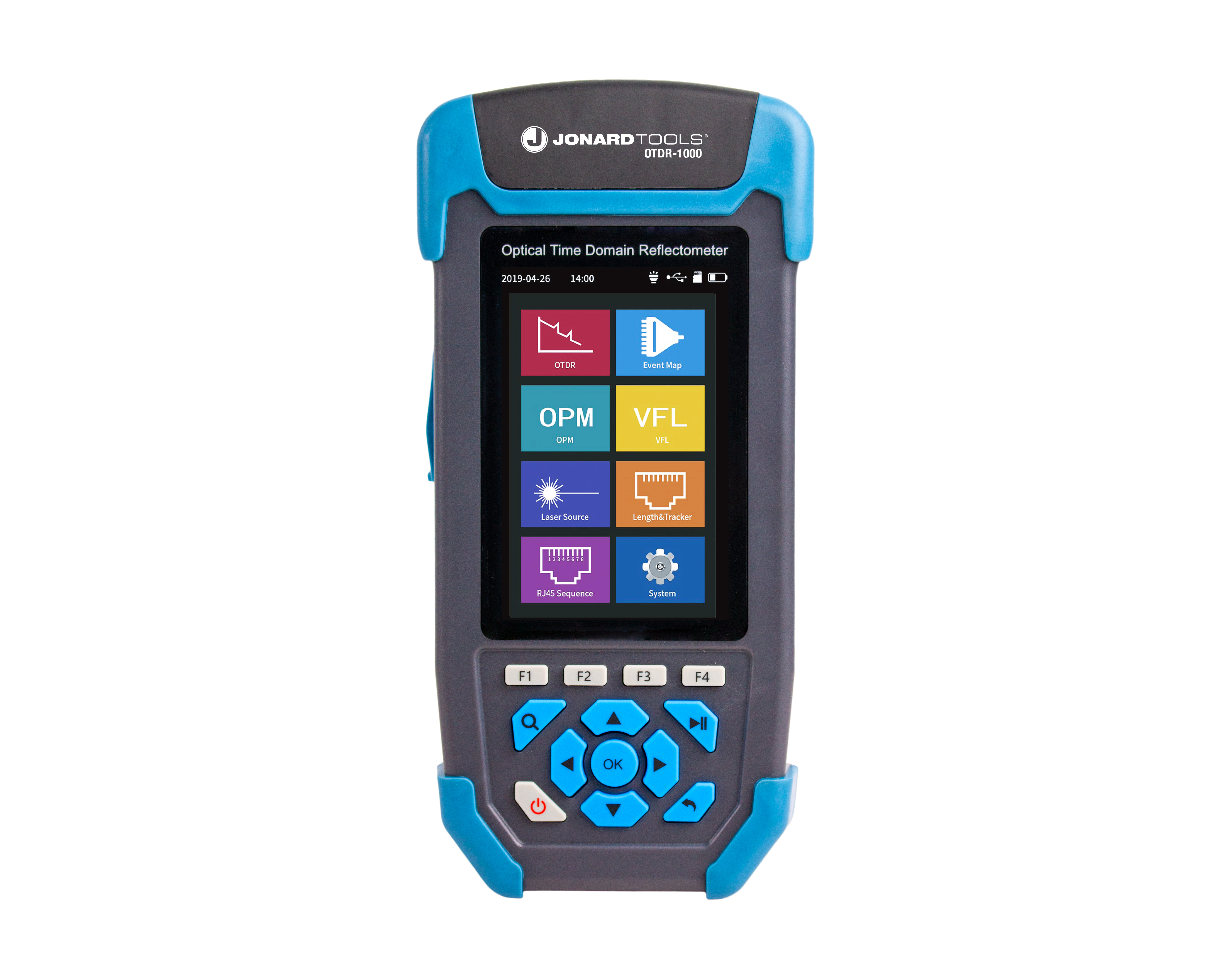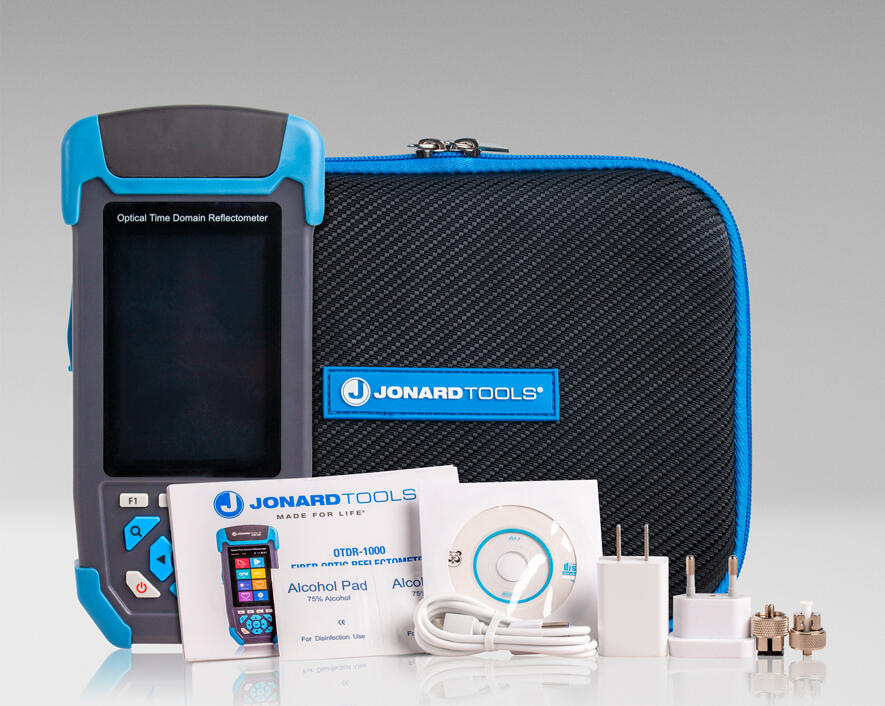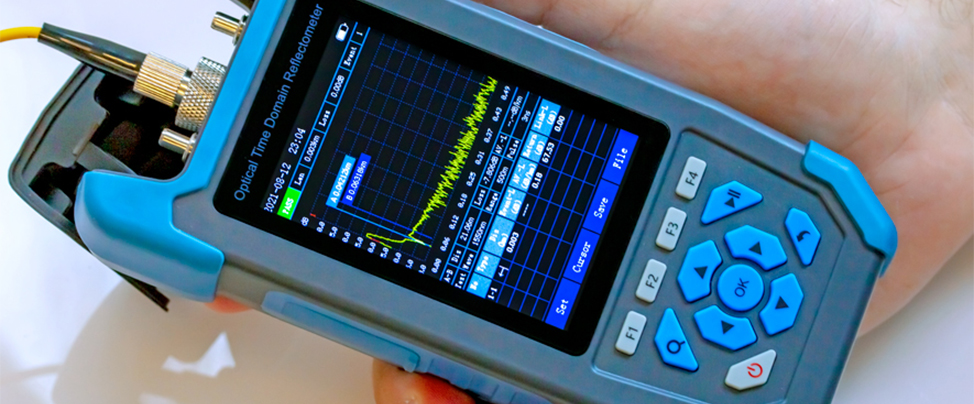Optical Time-Domain Reflectometers (OTDRs). What You Need to Know.
What You Need to Know about OTDRs (Optical Time-Domain Reflectometers)
OTDR’s (Optical Time-Domain Reflectometers) fundamentally do two things: They measure loss on a vertical scale, and they measure distance on a horizontal scale. There are also two types of event classifications that the vast majority uses when discussing events on the replicated signature trace upon completion of a test, or when reviewing a trace in real time: Non-Reflective and Reflective events.

The most common example of a non-reflective event is a fusion splice, as it consists of two pieces of glass that have been welded/melted/fused together, and thereby no longer has any remaining glass to create air boundaries. With no remaining reflective surface, it is classified as a non-reflective event.


Though uncommon, there are some manufacturers of APC connectors that build their products to exceed the required minimum of -65dB reflectivity for an APC connectors. These manufacturers produce APC connectors that have a consistent -68dB to -71.8dB reflectivity measurement, which is considered to be non-reflective. There have even been some isolated incidents during manufacturing and testing, where the test results have bested these extraordinary measurements.
Additionally, applications such as WDM/CWDM/DWDM/DTWDM and WWDM are adversely impacted by reflectance, channel separation, and coherent light interference. Minimizing the reflectance in these systems is of paramount importance. FTTX or Fiber-To-The-X is another application where minimizing reflectance is critical, as FTTX provides Voice, Data, and Video services over the fiber. Specifically, video transmission and video reproduction are extremely sensitive to and adversely affected by reflectivity. These applications, as well as others, were the driving development factors for APC grade connectors and components and have become a standard in the FTTX world.
Furthermore, the most common reflective events that occur within an optical infrastructure are caused by connectors. Depending on the grade of polish, the reflective value of the connector can vary greatly, where a higher grade means less reflectivity.
For example, the PC (Physical Contact) polish type has a reflectance value of -40 dB, whereas UPC (Ultra Physical Contact), SPC (Super Physical Contact), and APC (Angled Physical Connector) polish types have reflectance values of -50, -55, and -65 dB, respectively. Each one of these connectors has a different percentage of contact surface area due to their own chamfered/tapered/beveled/radial designs.
As it turns out, APC connectors minimize reflectance and perform better than all other types of connectors. APC connectors are designed with an 8° angle to its ferrule, so that only a portion of the connector contacts the other APC ferrule that its interfacing with.
Learn more about how Jonard Tools’ OTDR-1000 Multi-Function OTDR (Optical Time-Domain Reflectometer) the perfect all-in-one handheld device.

About Jonard Tools:
Founded in 1958, Jonard Tools® manufactures tools for the Telecom, CATV, Fiber Optic, Home Automation, Security & Alarm, and Electrical markets. Jonard Tools designs and engineers patented products by utilizing customer partnerships to create innovative solutions for industry needs. New tools are released each month and are all Made For Life® with lifetime warranties. Through quality and innovation Jonard aims to move the industry forward and connect the world.
Website: https://jonard.com/
Written by Sean Sheedy, Jonard Tools Fiber Optic Consultant
Edited by Michael DeGirolamo, Jonard Tools Product Engineer

Comments
Login or Register to post comments.